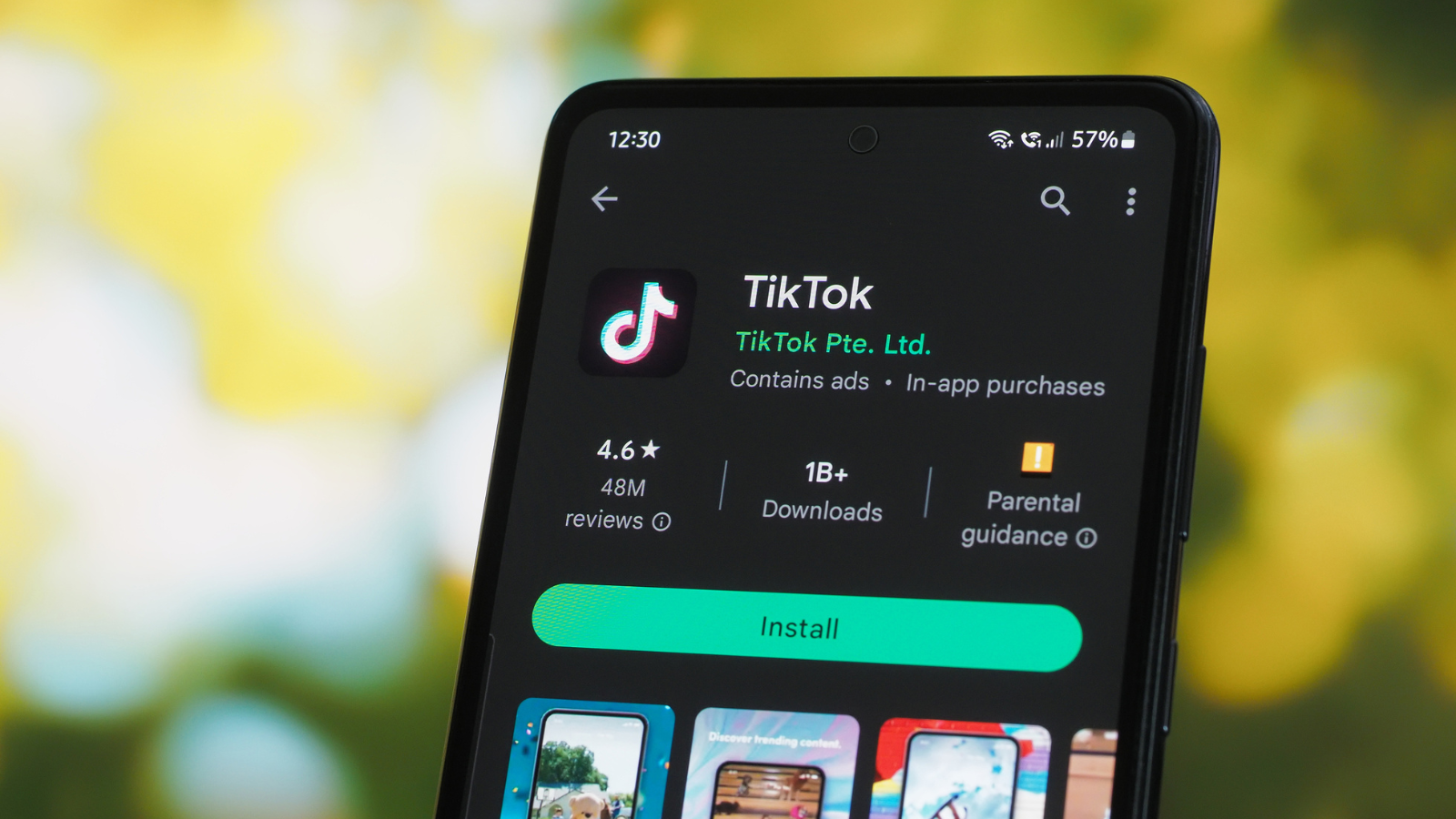Have you ever considered that where and how you get your news can dramatically affect the way you see the world?
According to Pew Research, “Social media platforms faced a range of controversies in recent years, including concerns over misinformation and data privacy. Even so, U.S. adults use a wide range of sites and apps, especially YouTube and Facebook.”
And we aren’t merely using these social media platforms to connect with friends and family across the globe either.
“Today, an overwhelming majority of Americans get news at least sometimes from digital devices,” Pew reports. And this can lead to some serious and very concerning consequences when people don’t stop to consider how these sources can affect the stories they hear.
Where Do Americans Get Their News?

Think the majority of Americans are keeping up on local and world events by sitting down to watch their local nightly news? Think again.
According to a separate Pew Research study, “A large majority of U.S. adults (86%) say they often or sometimes get news from a smartphone, computer or tablet… This is more than the 49% who said they often got news from digital devices in 2022.”
This figure far surpasses the 32% of Americans who get their news via television, a number that has remained fairly consistent despite the rise in digital news options. Far fewer Americans report getting their news from radio and print publications.
Americans Prefer Digital News Sources Over TV, Print Media

While some may argue that digital platforms are becoming more popular simply due to ease of access, this doesn’t tell the whole story.
“Nearly six-in-ten Americans say they prefer a digital device (58%), more than say they prefer TV (27%). Even fewer Americans prefer radio (6%) or print (5%),” according to Pew Research.
Furthermore, of those who prefer digital sources, roughly 25% of Americans prefer to get their news through news websites or apps, compared with 15% who prefer search, 12% who prefer social media and 6% who say they prefer podcasts.”
While convenience is certainly a factor, many Americans appreciate the nearly unlimited access to sources that support (or challenge) their existing beliefs.
Unfortunately, these sites aren’t always trustworthy, transparent, or unbiased.
Many Americans Get Their News from Social Media

Perhaps most concerning, a growing portion of Americans get their news primarily through social media apps, such as Facebook, Instagram, and TikTok.
“Three-fourths of Gen Z, millennials and Gen X use social media to find news, compared to only 44% of baby boomers, according to a recent Harris Poll study.”
According to Pew, “When it comes to where Americans regularly get news on social media, Facebook outpaces all other social media sites. Three-in-ten U.S. adults say they regularly get news there. Slightly fewer (26%) regularly get news on YouTube.”
These numbers aren’t necessarily surprising since Youtube and Facebook are the largest social media platforms. Currently, 83% of U.S. adults report using Youtube, while 68% report using Facebook.
Popularity of Social Media Sites Varies By Age

While Facebook and YouTube are the two most popular social media sites for U.S. adults to get their news, this statistic doesn’t take into consideration how different age groups approach social media.
While older generations are more likely to use Facebook and YouTube, many younger people have abandoned (or never had) Facebook to begin with.
“The most popular platforms for news gathering among Gen Z include Instagram (71%), YouTube (69%), TikTok (65%) and Facebook (51%),” according to the Harris Poll. By contrast, “Only 44% of Gen Z report consuming news on X and 22% on LinkedIn.”
As a result, news organizations, media outlets, and independent journalists are having to adjust their strategy in real time to meet this newer, younger demographic of news consumers where they are.
The Fastest-Growing “News” Platform? TikTok.

“Some social media sites – despite having relatively small overall audiences – stand out for having high shares of users who regularly go to the site for news. For example, roughly half of users on X (53%) get news there. On the other hand, only 15% of Snapchat users regularly get news on the app,” according to Pew.
The fastest-growing social media platform for accessing news content? Tiktok.
“While news consumption on other social media sites has declined or remained stagnant in recent years, the share of U.S. TikTok users who get news on the site has doubled since 2020.”
A full 44% of U.S. TikTok users report regularly getting their news on the social media app — up from only 22% in 2020.
Who Gets Their News from TikTok?

While TikTok has users of a variety of ages, genders, races, and ethnicities, TikTok is most popular with those who are:
- Young: 44% of those who regularly get news on TikTok are under 50.
- Women: 58% of regular TikTok news consumers are women.
- Democrats: 60% of regular TikTok news consumers are Democrats or Democratic-leaning independents. By comparison, only a third are Republican or GOP leaners.
This isn’t necessarily a problem, as people are free to get their news wherever they like, but it can affect which types of news is created and shared across this platform and others.
TikTok is Popular Among Gen Z

TikTok, in particular, is known for drawing in a younger crowd. While a third of U.S. adults report using the app, there’s no denying the app is more popular with teens than the elderly.
According to Pew, “About six-in-ten teens ages 13 to 17 (63%) say they use the platform. More than half of teens (58%) use it daily, including 17% who say they’re on it “almost constantly.”
By comparison, only 39% of those ages 30-49, 24% of those ages 50-64, and 10% of those ages 65 and older use the app.
Why is Social Media a Problematic News Source?

Experts have expressed concerns with people getting their news from social media sites for years, and for good reason.
Not only have we seen major privacy breaches and security concerns, but the algorithms themselves are designed to show some types of content while hiding others.
Many (rightly) have concerns over censorship and the pay-to-play models that allow information to spread based on money, not quality.
Additionally, social media is relatively free from many of the traditional oversights that more professional journalistic sources adhere to.
In other words, anyone can create any type of content at any time… without bothering to check if the information they are sharing is truthful.
Why are News Sources So Divisive?

America may not be headed for another civil war anytime soon, but there’s no denying that the last several years have felt incredibly divisive and partisan. And social media is responsible for some (though not all) of the blame.
It’s common for social media algorithms to create a sort of “echo chamber” for users, where their newsfeeds continue to deliver a steady stream of information they are already likely to agree with, without exposing users to alternate or opposing viewpoints.
Additionally, because the algorithms are often based on engagement metrics such as comments, clicks, likes, and shares, content that brings about a more emotional response tends to do better in the algorithm than content that is fair, unbiased, and non-partisan.
This can lead to content creators intentionally creating polarizing (or even inflammatory) clickbait type content, because that’s what brings in the clicks, and therefore, the dollars.
News and media organizations have bills to pay, and this type of content pays it.
Many Worry TikTok Poses a Threat to National Security

While these concerns are pretty universal (and somewhat unavoidable) across all the major social media platforms, TikTok poses an additional challenge.
According to Pew, “A majority of Americans (59%) see TikTok as a major or minor threat to U.S. national security, including 29% who see the app as a major threat.”
The level of concern varies, however.
- Older adults (46% of U.S. adults age 65+) are more likely to be concerned than younger adults (13% of those ages 18-29).
- Republicans (41%) are more likely to see TikTok as a major threat than Democrats (19%)
- And understandably, those
- U.S. adults who do not use TikTok are far more likely than TikTok users to believe TikTok is a major threat (36% vs. 9%).
Many Americans Support a TikTok Ban

Many Americans have expressed strong concerns about how the Chinese-owned TikTok could negatively impact our data privacy and national security.
In fact, according to Pew: “Lawmakers in the U.S. House of Representatives recently passed a bill that, if passed in the Senate and signed into law, would restrict TikTok’s ability to operate in the United States.”
While 38% of all Americans would support a U.S. government ban of TikTok, this concern varies widely by age group.
- Only 18% of U.S. teens said they would support a ban.
- 29% of adults under 30 would support a ban.
- 36% of adults ages 30-49 would support a ban.
- 39% of those ages 50 to 64 would support a ban.
- 49% of those ages 65 and older would support a ban.
How Does TikTok News Consumption Compare to Other Social Media Sites?

TikTok is only one of many social media sites where U.S. adults regularly get news content, of course.
The following list shows what percent of each site’s users regularly get their news from each site in 2023:
- X (Twitter): 53% of users (down from 59% in 2020)
- Facebook: 43% of users (down from 54%)
- Reddit: 38% of users (down from 42%)
- YouTube: 32% of users (consistent)
- Instagram: 34% of users (up from 28%)
- Nextdoor: 28% of users (up from 23%)
Americans’ Preferred Social Platform Varies by Gender

While large portions of the U.S. population visit each of these social media apps on a regular basis, each platform tends to attract a different type of audience.
According to Pew, “Women make up a greater portion of regular news consumers on Nextdoor (66%), Facebook (62%), Instagram (59%) and TikTok (58%), while men make up a greater share on sites like Reddit (67%), X (62%) and YouTube (58%).”
This doesn’t take into account the fact that it’s common for people to share content across multiple platforms, however, leading to some overlap.
What is the Solution?

Unfortunately, there’s no easy solution.
People will continue to use social media to connect with friends, family, and brands, and creators will continue to create the content that brings in the greatest engagement (and therefore dollars), even if that content isn’t the type of content they’d prefer to create.
The social media platforms could take the initiative and implement stricter rules and guidelines around privacy, safety, and misinformation, this would, in turn, lead to questions of censorship and free speech.
For now, it’s often up to the individual news consumer to educate themselves wisely — from a variety of trusted, reputable influencers, experts, or news organizations committed to sharing multiple viewpoints in a fair and factual way.
15 Famous Celebrities Who Embrace Christianity Despite Public Scrutiny

The morals and values of celebrities in Hollywood often stand in stark contrast to the Christian faith. Where the Bible says not to be arrogant or put your hope in wealth (1 Tim 6:17), many in Hollywood flaunt their expensive mansions, cars, and wardrobes.
Or when the Bible says “Do nothing out of selfish ambition or vain conceit. Rather, in humility, value others above yourself (Philippians 2:3),” it’s obvious to see how the cut-throat world of Hollywood makes this verse difficult to live out.
Thankfully, there are several celebrities who are successful actors AND followers of Christ. In fact, these men and women use their fame as a way to honor God and give back to others – exactly what the Christian faith is all about.
15 Famous Celebrities Who Embrace Christianity Despite Public Scrutiny
Bible and Money: 12 Reasons Why Some Christians Find Dave Ramsey Problematic

Dave Ramsey is a well-known figure in the world of personal finance and has gained a significant following for his advice on budgeting, getting out of debt, and building wealth. He’s perhaps best known for his “Financial Peace University,” a personal finance class frequently held by churches around the nation. But why do some Christians find him problematic?
Bible and Money: 12 Reasons Why Some Christians Find Dave Ramsey Problematic
Brittany Ann is an ECPA bestselling author and founder of Equipping Godly Women and Monetize My Ministry. She’s also a Christian speaker, podcaster, and conference host. Her work has been featured on numerous TV, radio, and online ministries, including CBN, MSN, Christianity Today, Evangelical Alliance, Patheos, Crosswalk, and more.

